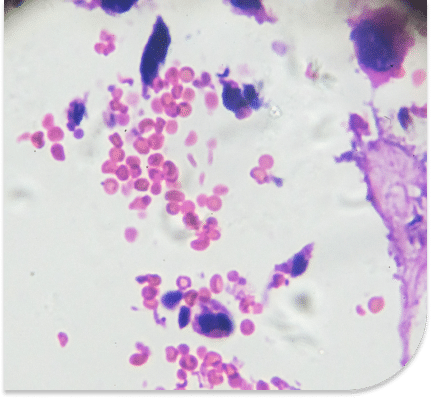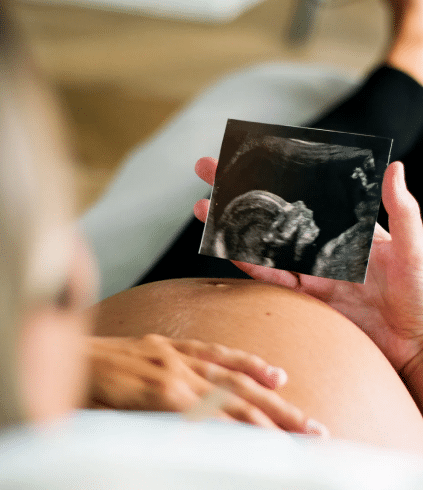Asbestos Exposure While Pregnant
Asbestos exposure during pregnancy may subject the mother and the unborn child to health risks. The risk to the fetus is considered to be minimal, because asbestos fibers rarely enter the bloodstream. If you or a loved one has been diagnosed with mesothelioma while pregnant, contact the Lanier Law Firm today for a free consultation.
Home » National Mesothelioma Law Firm » Asbestos Exposure » Asbestos Exposure While Pregnant
The most important measure pregnant women can take to protect themselves and their unborn children is to avoid asbestos exposure. This can prove challenging because most people who are exposed to asbestos do not experience symptoms and may be unaware when such exposure occurs.
Can Asbestos Fibers Reach the Fetus?
A growing fetus relies on the placenta to deliver nutrients from the mother’s bloodstream, according to the Mayo Clinic. If the mother’s blood contains asbestos, then the asbestos fibers could theoretically be able to cross the placenta and enter the baby’s bloodstream.
However, the Agency for Toxic Substances and Disease Registry has found that this is highly unlikely. It is rare for asbestos fibers to enter the bloodstream, and even if they do, they may not necessarily cross the placenta. Some fibers are not small enough to do so.

Complications of Asbestos Exposure Before
or During Pregnancy
An asbestos exposure study by Cancer Epidemiology Biomarkers and Prevention analyzed 2,968 women and girls in Wittenoom, Australia, who had been exposed to crocidolite, an amphibole asbestos with especially small, sharp fibers.
Researchers found three cases each of choriocarcinoma and hydatidiform moles among pregnant women who had been exposed. These conditions are types of gestational trophoblastic disease, which are rare diseases characterized by tumor growth inside the uterus.
Hydatidiform Moles
Hydatidiform moles, also known as molar pregnancies, are non-cancerous tumors that develop as a result of abnormal fertilization of an egg by multiple sperm. In a complete molar pregnancy, no fetus is present, and only abnormal clumps of cells grow in the uterus. A fetus may be present in a partial molar pregnancy, but it generally cannot survive. Molar pregnancies sometimes terminate on their own through miscarriage. However, in many cases, medical intervention is required to remove the abnormal tissue from the uterus. This may involve surgical removal of the molar pregnancy, or medical treatment to cause the uterus to contract and expel the abnormal tissue.
In the general population, approximately one pregnancy out of 1,000 is a hydatidiform mole, according to the Cleveland Clinic. In the Australian study, hydatidiform moles occurred in approximately 1.7 out of 1,000 pregnancies.
Choriocarcinoma
The National Cancer Institute defines choriocarcinoma as a fast-growing tumor that forms in the uterus after fertilization has occurred. In rare cases, the tumor may form in a testis or an ovary. Choriocarcinomas can spread to the blood and into other organs, most commonly the lungs.
According to the American Society of Clinical Oncology, choriocarcinoma occurs in two to seven of every 100,000 pregnancies. However, in the Australian study, the estimated prevalence was 9.9 of 1,000 women, suggesting that exposure to crocidolite asbestos could significantly elevate the risk of choriocarcinoma.

Risks to the Unborn Child if Asbestos
Crosses the Placenta
Although it’s usually considered to be unlikely, asbestos may enter the bloodstream, cross the placenta, and impact the fetus. If a fetus survives asbestos exposure in utero, the child may be born with an increased lifetime risk of developing an asbestos-related illness.
However, the rarity of this scenario creates challenges in completing definitive studies. The few studies that have been completed demonstrate that prenatal asbestos exposure can have detrimental health consequences after the child leaves the womb.
Stillborn Infant Study
A 1992 study by the University of Texas analyzed the lungs, livers, and placentas of five stillborn infants between 22 and 38 weeks of gestation. Researchers found uncoated asbestos fibers in at least one organ of each of the five infants.
The concentrations ranged from 71,000 to 357,000 fibers per gram of wet tissue. These are alarming numbers. According to Lung Cancer Journal, the mean concentration of patients with lung cancer was 62 fibers per gram of lung tissue in non-smokers. The concentration in mesothelioma patients was 77 fibers per gram.
This study strongly suggests that asbestos fibers can in fact cross the placental barrier, and may significantly impact the organs of unborn children.
Animal Studies
An analysis of animal studies published in 2019 by Behavioral Brain Research revealed that rats with prenatal exposure to chrysotile asbestos suffered oxidative stress with reduced activity in the hippocampus during adulthood. This change in the brain was associated with behaviors indicating anxiety and depression in the rats.
Autopsied Children
A 1988 study of 46 autopsied children between one month and 27 months old at the time of death found asbestos bodies in 21.7 percent of the children’s lungs. Seventy percent of these young children were diagnosed with sudden infant death syndrome (SIDS), and 30 percent with bronchopulmonary dysplasia.
Children with asbestos bodies in their lungs accounted for 46.6 percent of the SIDS cases and 42.8 percent of the bronchopulmonary dysplasia cases. It is important to note that it is not clear from this study whether these children’s exposure occurred in the womb or after birth.
Risk to Pregnant Women
Asbestos exposure during pregnancy increases the expectant mother’s risk of developing mesothelioma, lung cancer, and asbestosis later in life. These conditions have a latency period of 10 to 60 years. Consequently, asbestos exposure during pregnancy is unlikely to result in immediate health effects that affect the pregnancy.
Indirect Effects of Asbestos
Exposure on the Developing Fetus
Asbestos exposure may indirectly impact the fetus if the mother develops asbestos-related illnesses, pleural thickening, or pleural effusions that create shortness of breath, which could limit oxygen to the fetus. If the mother develops peritoneal mesothelioma, a tumor in the abdominal region could press on the fetus and cause adverse effects.
The Journal of Maternal-Fetal Medicine reports that malignant mesothelioma appears to be largely unaffected by pregnancy. Certain types of cancer treatment are generally considered to be safe in the second and third trimesters, according to the National Cancer Institute.
Mesothelioma and other asbestos-related illnesses are most likely to develop as a result of asbestos exposure during the years or decades prior to the pregnancy. Even if a woman avoids asbestos during pregnancy, she could still develop mesothelioma as a result of a prior exposure.

How Are Pregnant Women Exposed to Asbestos?
Asbestos was extensively used in the construction industry and consumer products until the late 1970s. It was used in vermiculite insulation until approximately 1990. As a result, asbestos may be lurking in many homes and workplaces.
Some common sources of direct asbestos exposure for pregnant women include the following:
- Occupational asbestos exposure
- Insulation or other building components in an older home
- Older public buildings, such as government buildings
- School or university buildings
Secondary Asbestos Exposure While Pregnant
The most common source of asbestos exposure in women is secondary asbestos exposure. This occurs when another family member who is directly exposed to asbestos at work or school brings home asbestos fibers, usually on clothing.
Asbestos brought home on clothing may become airborne and can enter the heat and air conditioning ductwork, creating a chronic state of asbestos exposure throughout the home. Women have historically experienced the highest concentrations of asbestos exposure while laundering asbestos-tainted clothing.
Can Asbestos Enter Breast Milk?
The Centers for Disease Control and Prevention (CDC) has determined that asbestos is unlikely to enter breast milk. In order to do so, asbestos would have to enter the bloodstream and make its way to the mammary glands, according to the National Library of Medicine.
It is more likely that a breastfeeding infant would be exposed to asbestos during breastfeeding if the mother has recently been exposed to asbestos and harbors fibers on her skin or clothing. This could result in the infant inhaling or ingesting fibers while breastfeeding.

How to Protect a Growing Fetus and Breastfeeding Infant
The only effective method to protect a fetus from asbestos-related disease is by avoiding asbestos exposure. This can be done by taking the following precautions:
- Test for asbestos in your home and follow asbestos abatement recommendations by a licensed asbestos abatement contractor.
- Avoid secondary asbestos exposure by ensuring that a spouse is not exposed on the job or that EPA-required guidelines are strictly followed at work.
- Be aware of hazardous products that may contain asbestos.
The good news is that your unborn child is unlikely to be exposed to asbestos in the womb, even if you are inadvertently exposed or have been exposed in the past.
By submitting this form, you agree to our terms & conditions. Please read the full disclaimer



